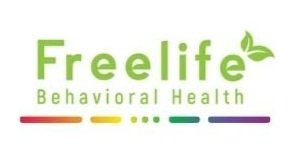Asexual Awareness Week: Celebrating Diversity, Deepening Understanding
Asexual Awareness Week, held annually from October 27 to 31, is a time to uplift asexual voices, share accurate information, and celebrate the rich diversity within the asexual community.
Too often, conversations about sexuality assume that everyone experiences sexual attraction in the same way.
But a closer look at asexuality reveals that this simply isn’t true. Asexuality is a valid and natural part of the human spectrum, and understanding it helps create a more inclusive world for everyone.
Learning about asexuality isn’t just about labels. It’s about respecting experiences that may differ from the mainstream and recognizing the many ways people form meaningful relationships, build lives, and experience love.
What makes a person asexual?
To understand asexuality, it’s important to start with the basics.
Asexuality is a sexual orientation characterized by experiencing little or no sexual attraction to others. This doesn’t mean asexual people don’t have relationships, emotions, or deep connections. It simply means that sexual attraction isn’t a driving force in their lives.
Some asexual people never experience sexual attraction, while others may only experience it rarely, under specific circumstances, or not at all. Asexuality exists on a spectrum, and people may use different terms to describe their experiences, such as demisexual (sexual attraction only after emotional bonds form) or gray-asexual (occasional or low levels of sexual attraction).
Understanding the meaning of asexuality helps move conversations away from stereotypes. Asexuality is not the same as celibacy, which is a choice to abstain from sex. It’s also not about fear, trauma, or dysfunction. It’s simply a different, equally valid way of experiencing the world.
Do asexuals fall in love?
One of the most common misunderstandings about asexuality is the assumption that asexual people can’t or don’t fall in love. The truth is: many asexual people do experience romantic attraction, and they build loving, fulfilling relationships, just like anyone else.
Sexual attraction and romantic attraction are not the same thing. Asexual individuals may identify across a wide range of romantic orientations. For example, some are heteroromantic (romantically attracted to a different gender), homoromantic (romantically attracted to the same gender), biromantic, panromantic, aromantic (no romantic attraction), or somewhere in between.
Some asexual people have partners, get married, raise families, or maintain close romantic bonds. Others may prefer deep platonic connections, queerplatonic partnerships, or chosen families.
Exploring the meaning of asexuality helps us understand that love doesn’t have to look one way. It can be romantic, platonic, emotional, or something uniquely defined by the individuals involved.
Can you be asexual and straight?
Another question that often comes up when people explore asexuality is whether someone can be both asexual and straight.
The short answer is: yes, because asexuality refers to sexual attraction, while straight, gay, or bi typically refers to romantic attraction or the gender(s) someone is attracted to romantically.
For example, an asexual person might identify as heteroromantic, meaning they experience romantic attraction to a different gender but little or no sexual attraction overall. Someone else might identify as homoromantic asexual or panromantic asexual, depending on their romantic orientation.
Some asexual individuals don’t use romantic labels at all, and that’s valid too. The spectrum is wide and personal. Understanding the meaning of asexuality means recognizing these nuances and respecting each person’s self-identification without making assumptions.
Asexual people can also choose to have sex for various reasons: because they want to, to connect with a partner, or not at all. There is no single way to be asexual, just as there’s no single way to experience love or relationships.
Final thoughts: Awareness builds inclusion
Asexual Awareness Week is about shining a light on asexual communities, breaking down myths, and creating space for real understanding.
Learning about asexuality challenges assumptions and opens up new ways to think about connection, identity, and love.
Asexual people deserve visibility, respect, and the freedom to define their identities on their own terms. By deepening our understanding of asexuality, we can help build a culture where everyone’s experiences are recognized and valued.
At Freelife, we stand with asexual communities this Asexual Awareness Week and beyond. We believe that awareness is the first step toward true inclusion. Whether you identify as asexual, are questioning, or simply want to be a better ally, your curiosity and openness make a difference.
